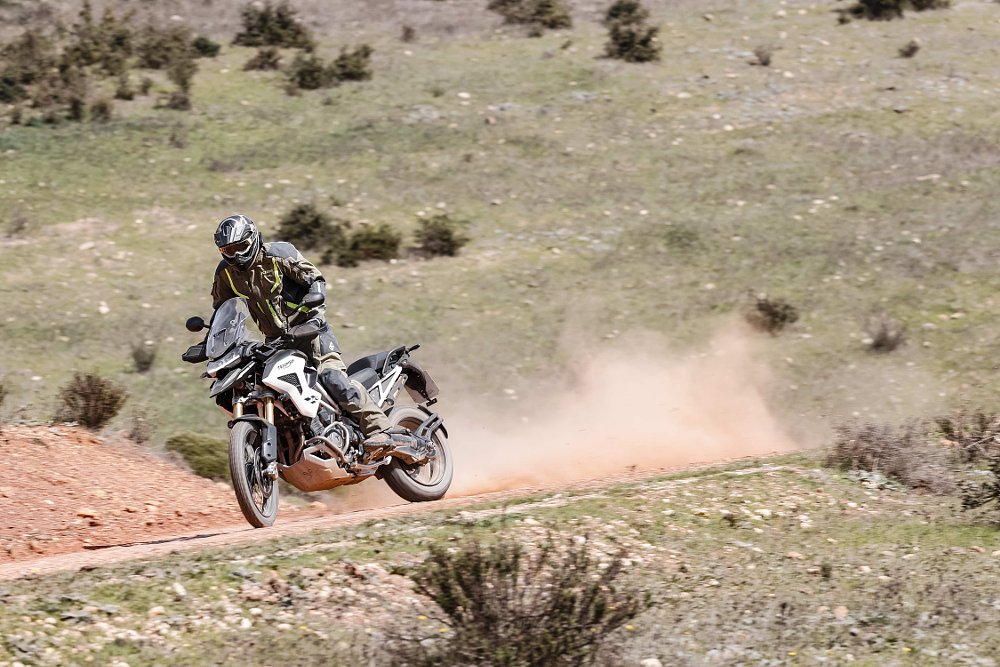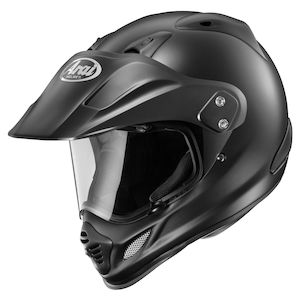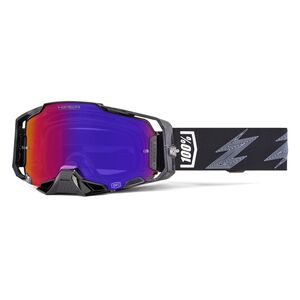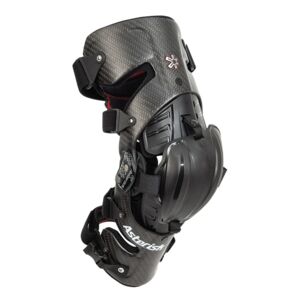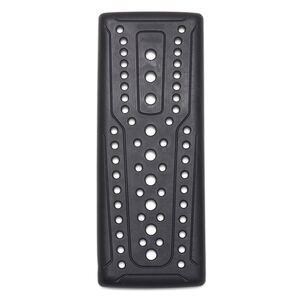As Lufthansa Flight 1910 from Munich, Germany began its descent, I got my first view of the Italian island of Sardinia as we dropped below the cloud cover. Hundreds of dirt roads covered the island like a spiderweb. They connected the jagged, rocky peaks with lush green valleys where the dirt turned to winding asphalt that resembled a snake slithering through a grassy field.
“This looks like an adventure bike rider’s paradise,” I said to Spenser Robert, RevZilla’s West Coast video producer, who was traveling with me. He just nodded in agreement.
We stepped off the plane and embarked on a 48-hour whirlwind trek of dirt roads, manicured blacktop, and Italian motorbikes. More specifically, a matching pair of Ducati’s all-new DesertX.
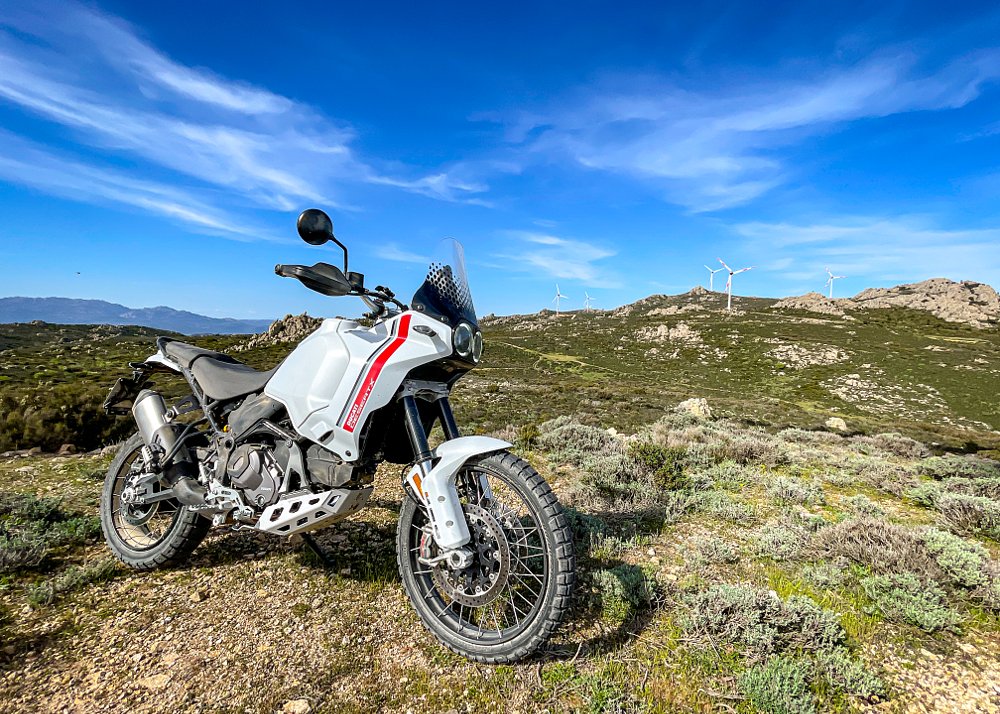
The Ducati DesertX
The way I see it, Ducati has been working towards this bike for quite a while. The Scrambler family of motorcycles has been growing steadily since it was introduced in 2015. Then, in 2016, Ducati introduced the Multistrada Enduro, an off-road version of its premier sport-tourer. And while these models had developed some limited off-road credibility, Ducati was still sitting on the fringe of the ADV segment.
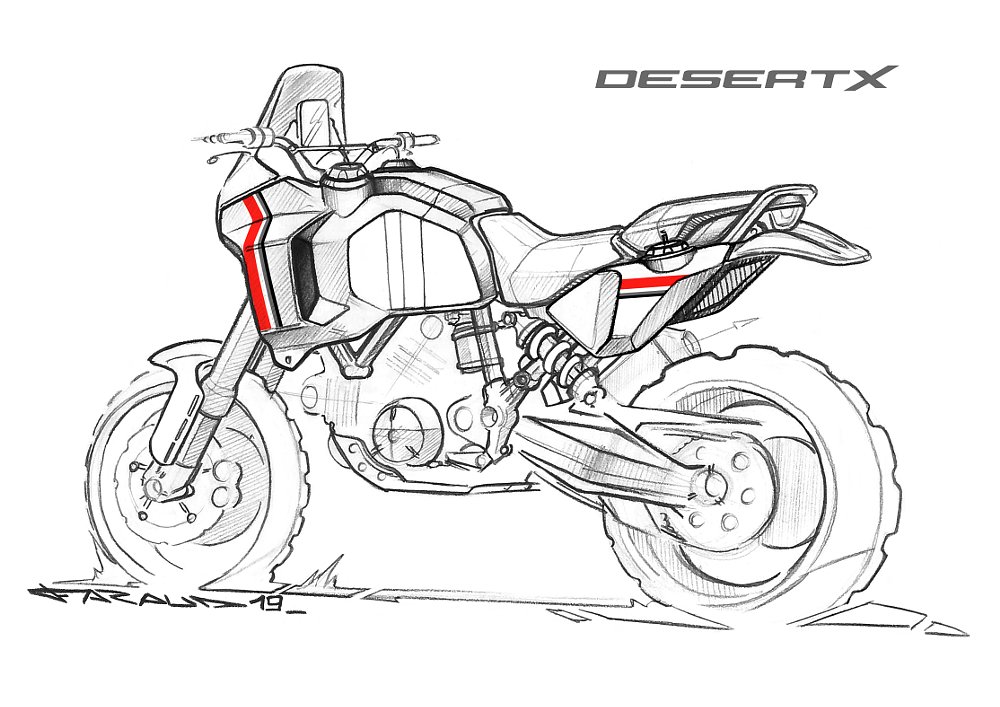
Then, in 2019, Ducati displayed a radical new concept bike at the EICMA show. It was labeled simply DesertX, like a code name that Q would have used when handing over the keys to one of his new creations to Bond, James Bond.
Its looks were strikingly handsome in a class of motorcycles where the designers have all spent way too much time drawing inspiration from Michael Bay’s “Transformers” franchise. The DesertX concept bike’s style looked more like a 1990s rally bike than other modern adventure machines. Those looks resonated with a lot of riders.
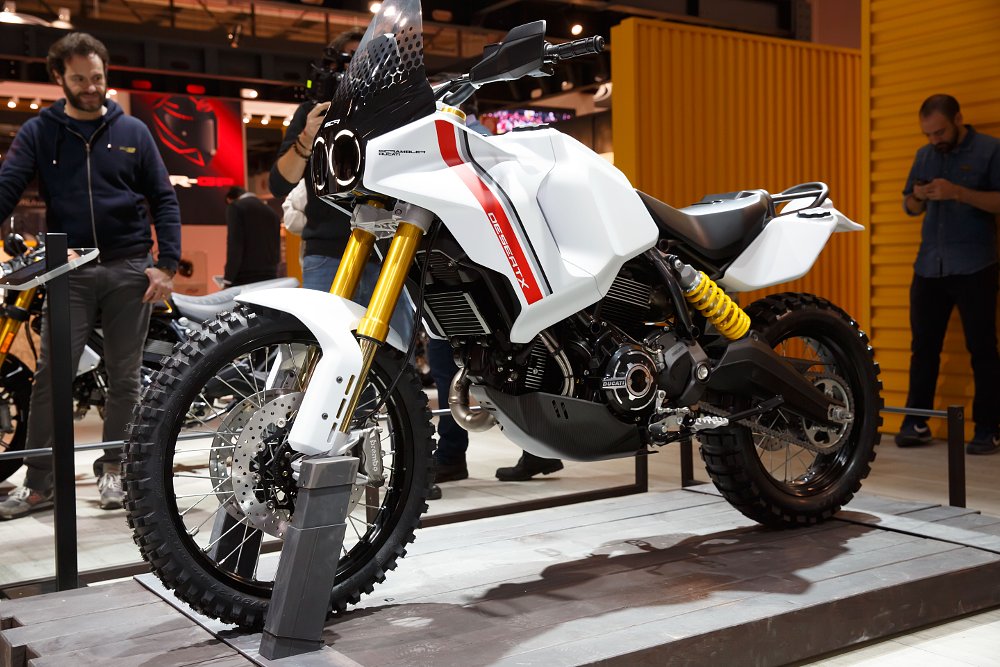
Giulio Fabbri, Ducati’s Head of Product Communication, commented in our press briefing that this bike was built based on the resounding response they received regarding the concept. Ducati responded with a production version that looks nearly identical to the concept bike, with one key difference: The engine.
When the original concept bike made its debut, it was sporting the air-cooled 1100 engine found in the big Scrambler. For this production version, however, Ducati ended up using the same 937 cc liquid-cooled, Testastretta 11-degree V-twin found in the Monster, Hypermotard, and Multistrada V2. This decision was made for two main reasons.
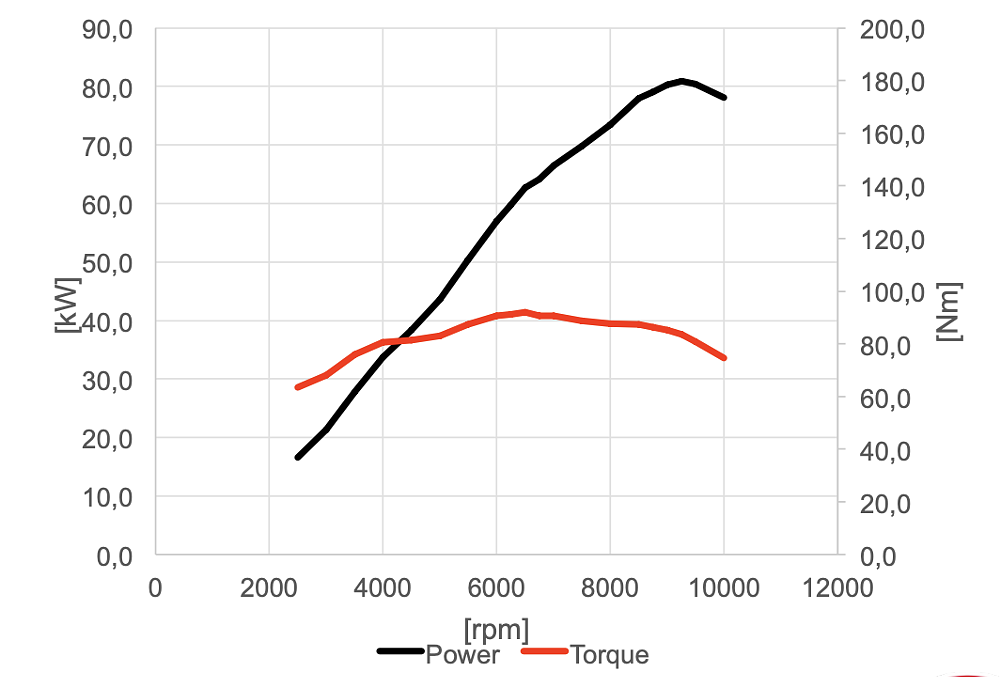
First, with four desmodromic-actuated valves per cylinder, it is more powerful than the Scrambler engine. With a unique tune exclusive to the DesertX, this bike claims 110 horsepower at 9,250 rpm at and 68 foot-pounds of torque at 6,500 rpm. For those of you doing the math, the DesertX claims more top-end horsepower than any other adventure bike in the sub-1,000 cc class. The second reason is that this engine requires less maintenance than the 1100, which means service intervals at every 9,000 miles and valve checks at every 18,000.
The engine’s power hits the ground via a six-speed gearbox, tuned specifically for the DesertX. Compared to the Multistrada V2, all of the gears from first through fifth have been shortened, with first and second gear coming in especially short to allow for ease of use in low-speed, technical terrain. Sixth gear remains a longer overdrive gear for comfortable highway travel.
Shifts come from a hydraulically actuated, eight-disc clutch. According to Ducati, the gear drum is mounted on bearings to reduce friction and improve precision and smoothness while shifting. For riders who prefer clutchless shifting when riding aggressively, the DesertX is outfitted with a quickshifter (DQS) as standard equipment and can be used for shifting up or down.
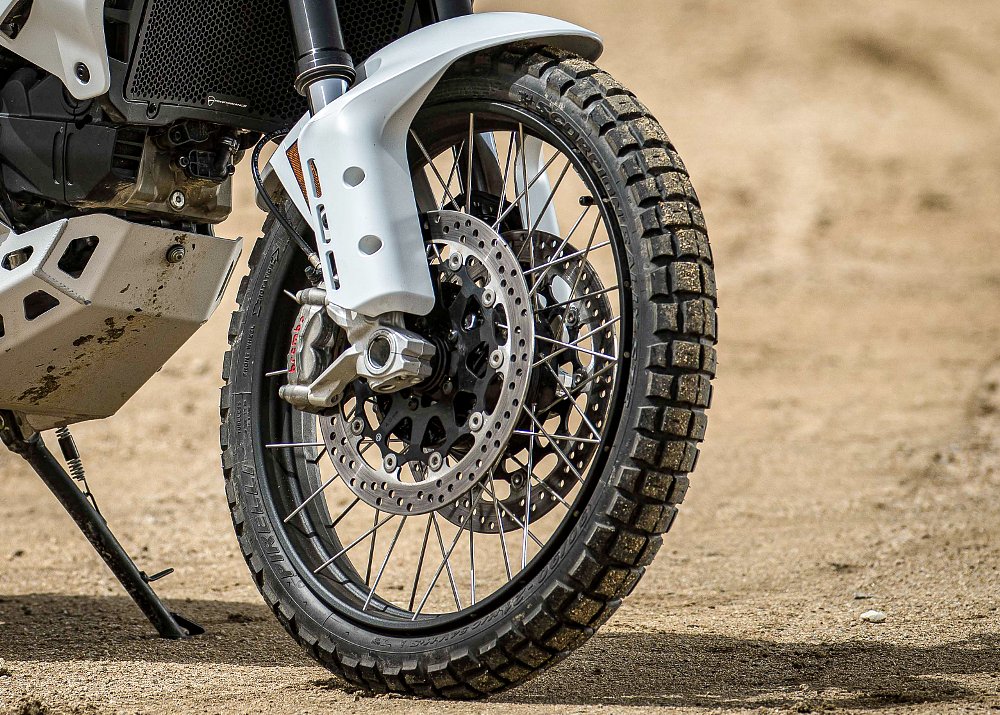
While the engine will be familiar to Ducati enthusiasts, the off-road-focused 21- and 18-inch wheel sizes will not be. This is the first time in Ducati’s modern history that it's used a 21-inch front wheel on one of its motorcycles. This was a point they continued to drive home as they see the DesertX as direct competition for all of the ADV bikes out there sporting a 21-inch front tire.
The cross-spoked wheels allow the tires to run without the use of tubes. In stock trim, Ducati opted for Pirelli’s Scorpion Rally STR tires (STR stands for “street”). This is the same tire that comes stock on other ADVs in the segment, such as the Aprilia Tuareg and Yamaha’s Ténéré 700.
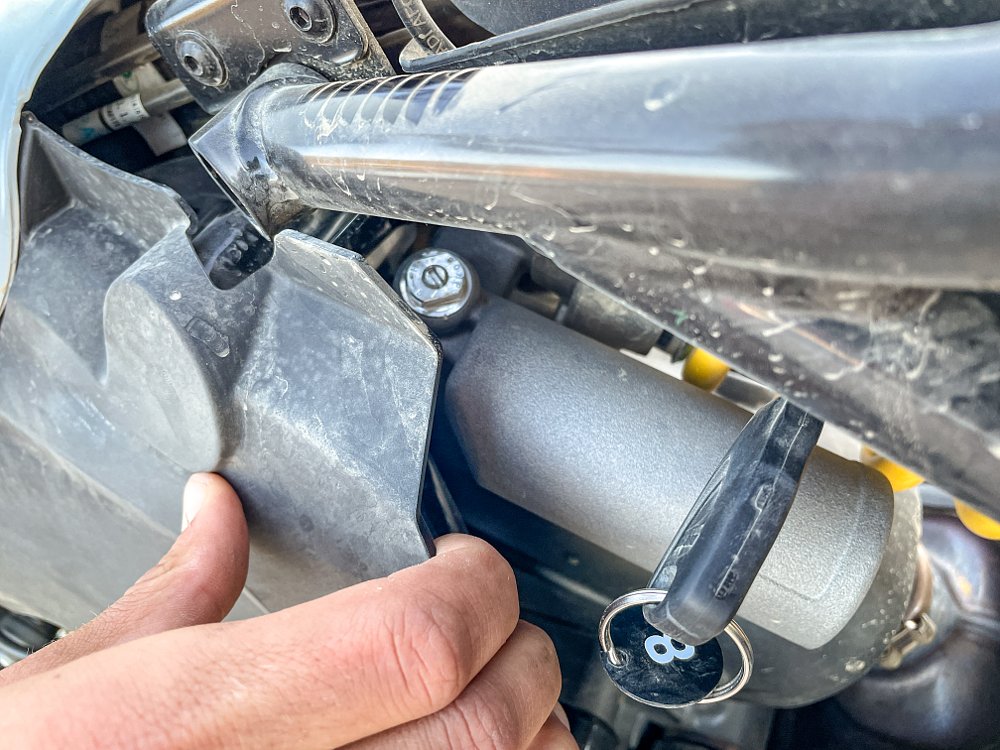
Keeping the wheels on the ground is a long-travel suspension from KYB. The 46 mm front fork gets nearly 9.1 inches of suspension travel and features adjustment for preload as well as compression and rebound damping. The rear monoshock gets 8.7 inches of travel and a remote preload clicker as well as settings for compression and rebound damping.
Slowing everything down are a massive pair of M50 Brembo Monoblock four-piston calipers up front and a two-piston caliper out back. ABS features three settings and is lean-angle-sensitive in its highest setting. While ABS can be turned off completely with a push of a button located at the rider's left hand control module, if you want to dial in different levels of ABS, that is done through the five-inch TFT display.
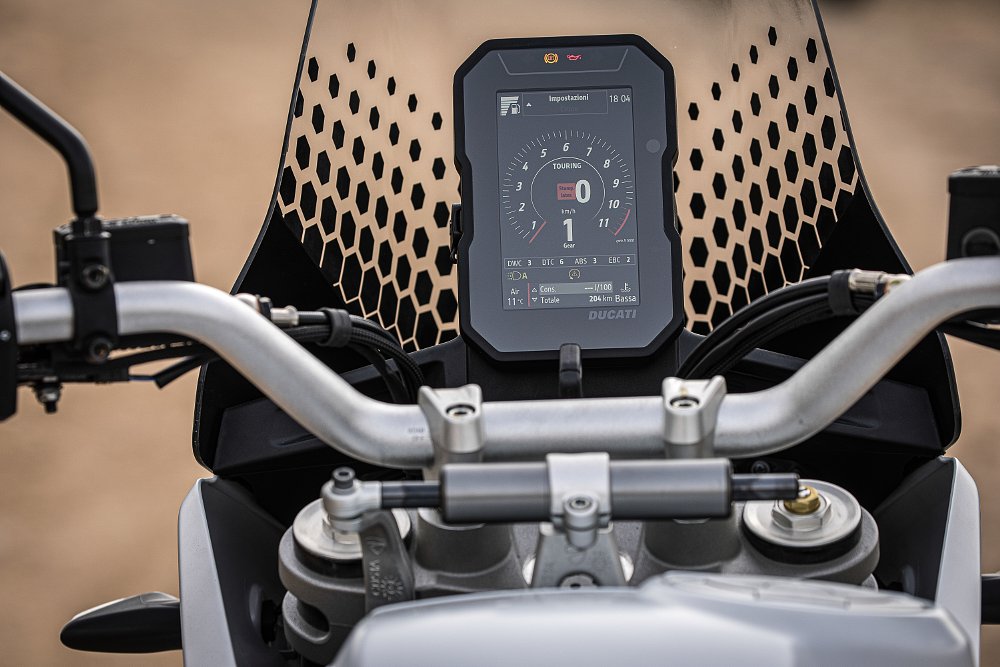
Using the dash, riders can choose from six rider modes: Sport, Touring, Urban, Wet, Enduro, and Rally. Each of those six rider modes can be configured with three levels of ABS, eight levels of traction control (DTC), four levels of wheelie control (DWC), three levels of engine braking (EBC), and two options for throttle response.
If this sounds like a lot to remember, it gets even more complex. The numbers aren’t like-for-like. For example, a “Level Two” traction control in one ride mode is not the same as “Level Two” traction control in another setting. So on and so forth. Also, for all of the electronic settings, aside from engine braking, the higher number means a higher the level of intervention. For example, level eight traction control provides more intervention than level two. For the engine braking option, however, the higher the number the less engine braking there is.
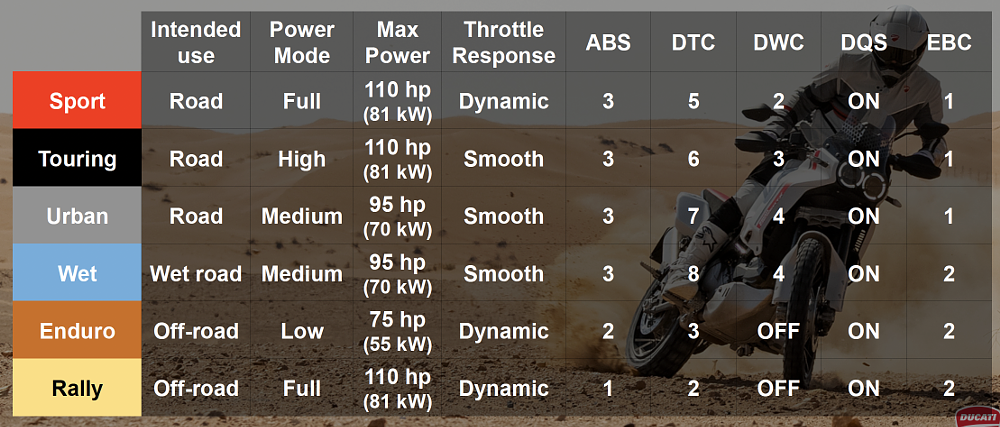
The chart from Ducati above helps break down all of the stock settings for each of the ride modes. (If you are familiar with Lance’s “First Look” article on the DesertX, you notice that some of the settings have changed with the production version.) But essentially there are four street-oriented modes. Sport and Touring provide the full 110 horsepower for the street and Wet and Urban reduce horsepower to 95 ponies, tame the throttle response, and start increasing the level of intervention from the rider safety aids.
There are then two dedicated off-road modes: Enduro and Rally. Aimed at riders who are less familiar with riding off-road, Enduro reduces power to 75 horsepower and leaves ABS on in a reduced capacity at both wheels. Rally, however, offers up the full potential of the engine, disables ABS at the rear wheel and reduces it even further at the front wheel, and lowers traction control intervention. In addition to being able to tweak their levels, ABS and Traction Control can also be fully disabled.
Throw in electronic cruise control, a 5.5-gallon fuel tank, and a claimed weight of 492 pounds, and you’ve got the makings of a fun long way up, down, or around.
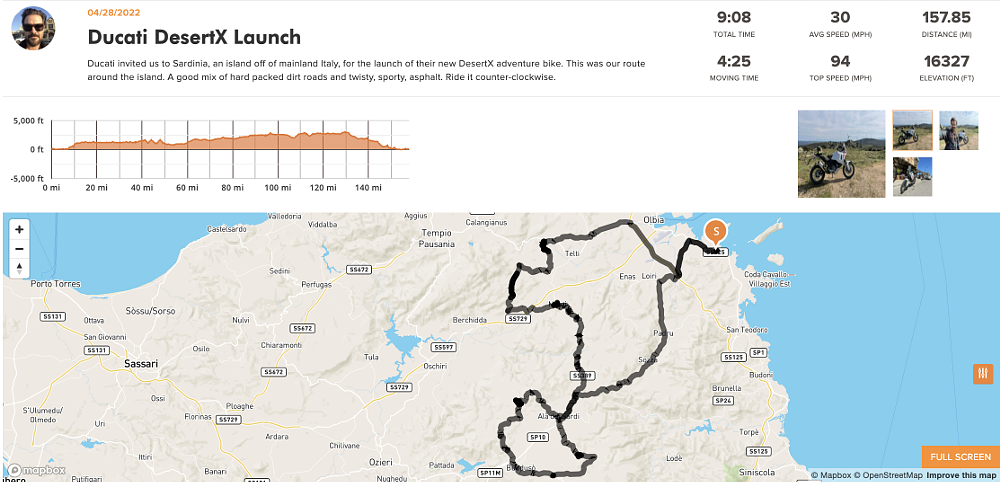
Riding the Ducati DesertX on the street
The paved roads in Sardinia are impressively fun. There are sweeping curves, switchbacks, and charming country lanes through vineyards and pastures where cows and sheep graze peacefully, barely raising hoof or horn to acknowledge a raucous Italian motorbike as it tears by. Italian livestock must be used to fancy vehicles ripping around their dining room.
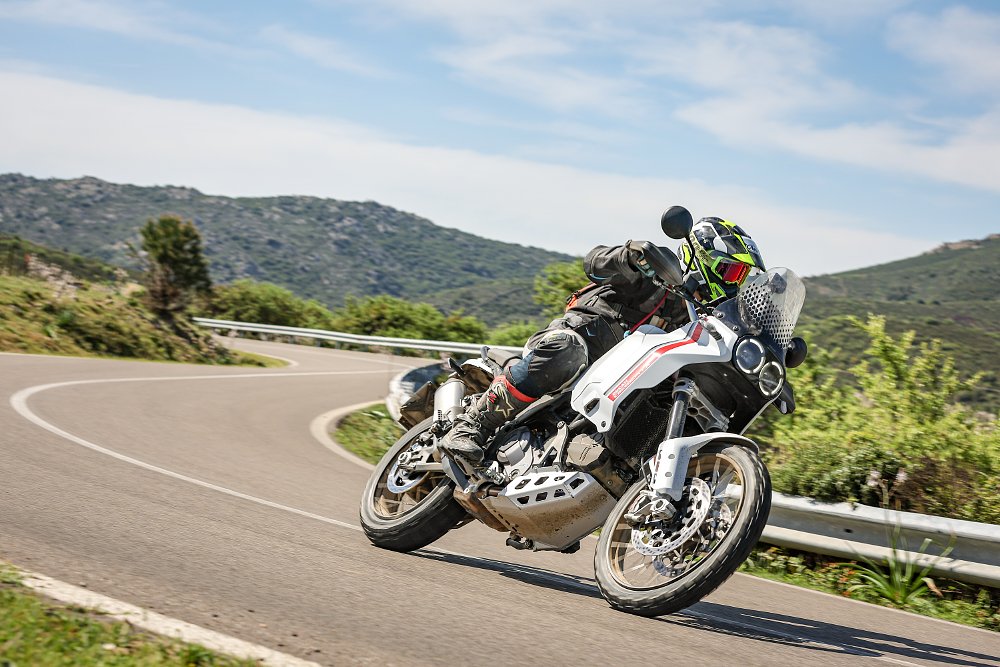
Pulling off of a small country lane exiting our hotel and cranking the throttle, the engine snapped to life and pulled hard in Touring mode. Power delivery comes on around 4,000 rpm and pulls strong and linearly to nearly the redline at 10,000 rpm before running into the rev limiter.
Below 4,000 rpm the engine feels a bit grumbly, like it is still waking up. At highway speeds the engine feels relaxed and perfectly at home, spinning roughly 5,000 rpm at 75 mph in sixth gear.
In the world of modern emission requirements, the fueling is fantastic. I couldn’t find any flat spots or surges and the electronic rider modes had a big effect on the overall feel of the power and the throttle. I wish the fueling on my KTM 890 Adventure R was this good.
On the street, I really enjoyed both Touring and Sport modes, as they offer up the full potency of the engine, but each with a distinctly different feel from the throttle. I didn’t like Urban mode at all. The throttle response just feels way too mushy and neutered, and the reduction to 95 horsepower feels significantly weaker than even the Enduro setting (a mode I actually enjoyed on the street). Considering it didn’t rain during our stay, I didn’t have any reason to use Wet mode.
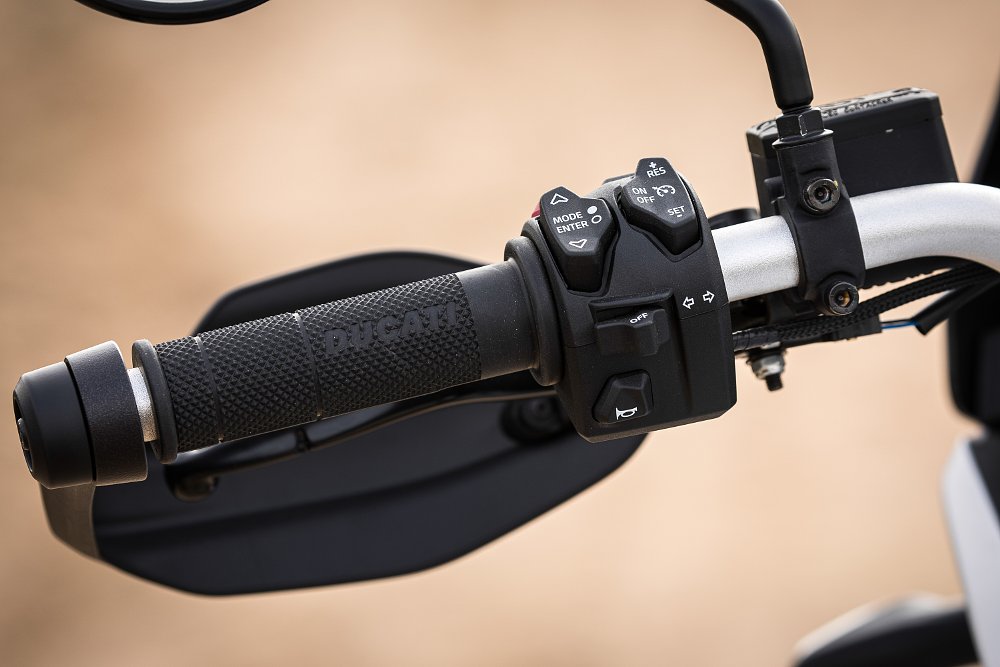
I spent some time familiarizing myself with the system before clicking the bike into gear, but even then, I got a bit confused at times. To change ride modes, you have to hold the center button on the lefthand control down for one second before the screen takes you to a separate control panel. I kept forgetting to hold it down and just tapping the button toggles you to a separate screen where you can alter ride modes. Trying to learn this system on the fly can be a bit distracting. I’d recommend practicing prior to riding.
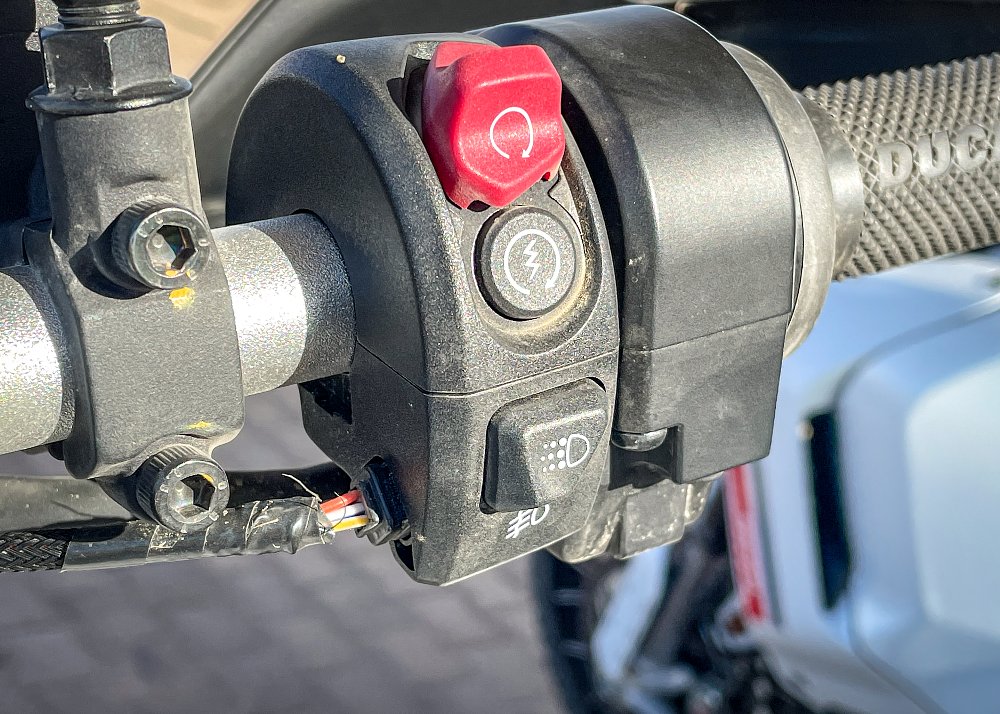
From a fit and finish standpoint, I was a bit disappointed to see that the covering around the individual wires heading into the right handlebar module doesn’t complete its journey. At first I thought this might have just been an oversight on my bike, but it looked to be the same across nearly all of the bikes. Perhaps this is only an issue on our initial test bikes. But given the significance of the electronics on this model, and its intended use off-road, this struck me as a potential weak point.
Through the corners, the DesertX feels like a proper Ducati street bike. You’d be hard pressed to know you were rolling around on knobbish tires with a big ol’ 21-inch wheel up front. It’s easily one of the best ADV options for ripping around on the asphalt. It’s incredibly stable through the corners and holds a line with the manners you would expect from an Italian sport bike.
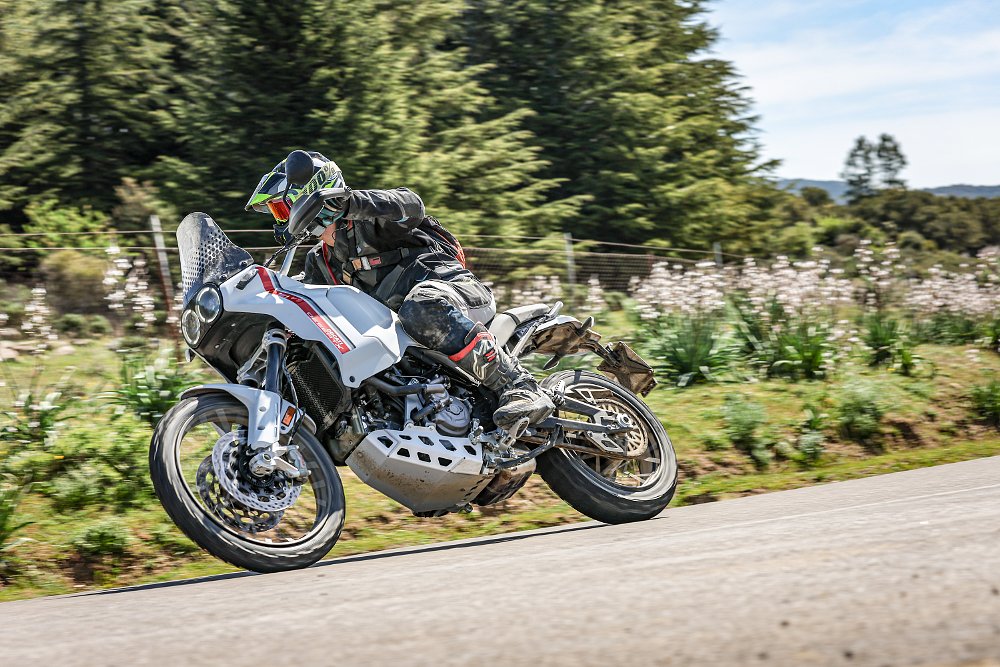
The only thing that gave me intermittent issues was the occasional clunky upshift. At first I thought this was a quickshifter issue as I discussed in the video, but it happened while using the clutch, as well. I would say one in a hundred upshifts felt a bit jarring. Very random. Downshifts were perfectly seamless every time.
A one-finger pull on the brake lever is all that is needed to slow the DesertX down in all but the most extreme braking situations. The big ol’ Brembos provide great stopping power with a very progressive feel.
The ergonomics on the DesertX are surprisingly roomy for this six-foot, three-inch test pilot. There is a wide, comfortable reach to the handlebar and the seat doesn’t lock me into one position like some other ADV bikes. I am able to easily slide back and forth and side to side, moving around on the bike as we work our way through the corners.
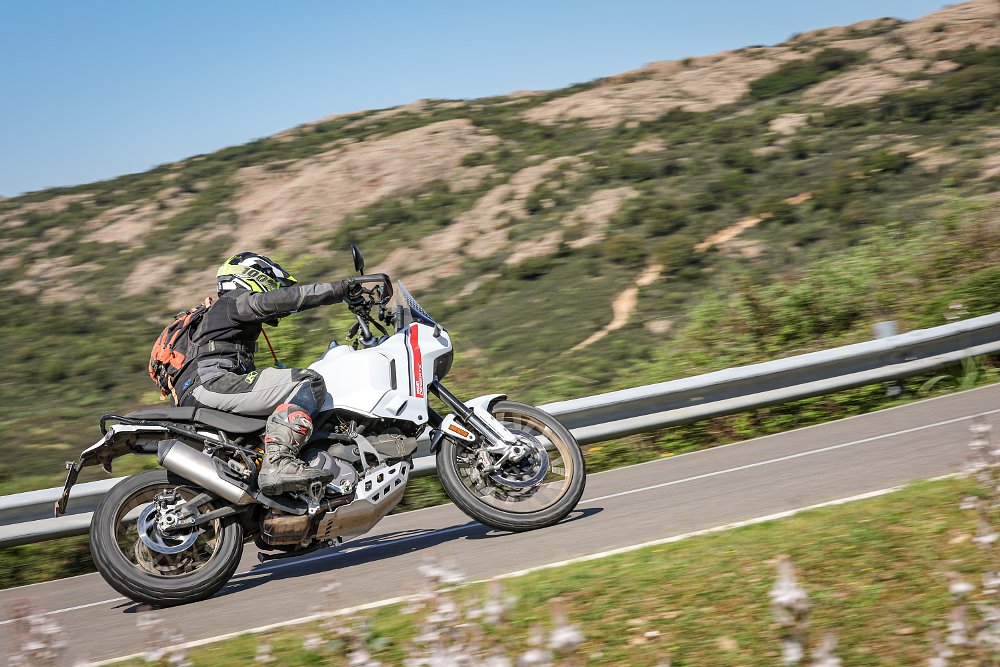
I also find that the 34.4-inch seat height provides a relatively easy reach to the ground. I am able to completely flatfoot the bike on both sides, which makes me believe this will be a bit more approachable for shorter riders than the spec sheet numbers imply.
That being said, there is a low seat option as well as a low-suspension version in the works. The low seat shaves off a third of an inch, getting the seat height down to 34.1 inches. Combine that with the low suspension and you can get the seat height down to 33.3 inches.
A Triumph Tiger 900 Rally Pro, for example, has a stock seat that can be set to 33.5 inches with a low-seat option that drops it to 32.75 inches, all without lowering the suspension. Compared to that, even a lowered DesertX seems tall on paper. Even the KTM 890 Adventure R, one of the tallest bikes in the segment with a 34.6-inch stock seat, can get down to 33.6 inches via a low seat and no alteration to the suspension.
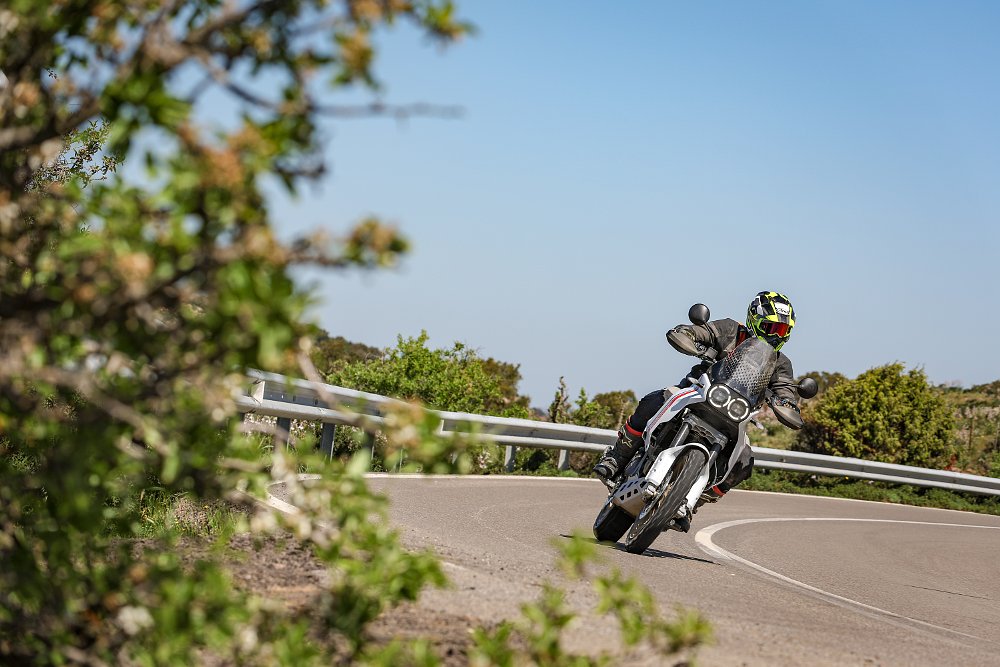
At my height, the windscreen did a great job of keeping the wind off of my chest at highway speeds. Air flowed smoothly over my helmet with no uncomfortable buffeting. That being said, the windscreen is not adjustable, a bit of an oversight for a bike of this price point. So, if you’re not my height, your results with the wind protection may vary.
Overall, the DesertX was an extremely fun and exciting street bike. But street performance is only half of the job for an adventure bike.
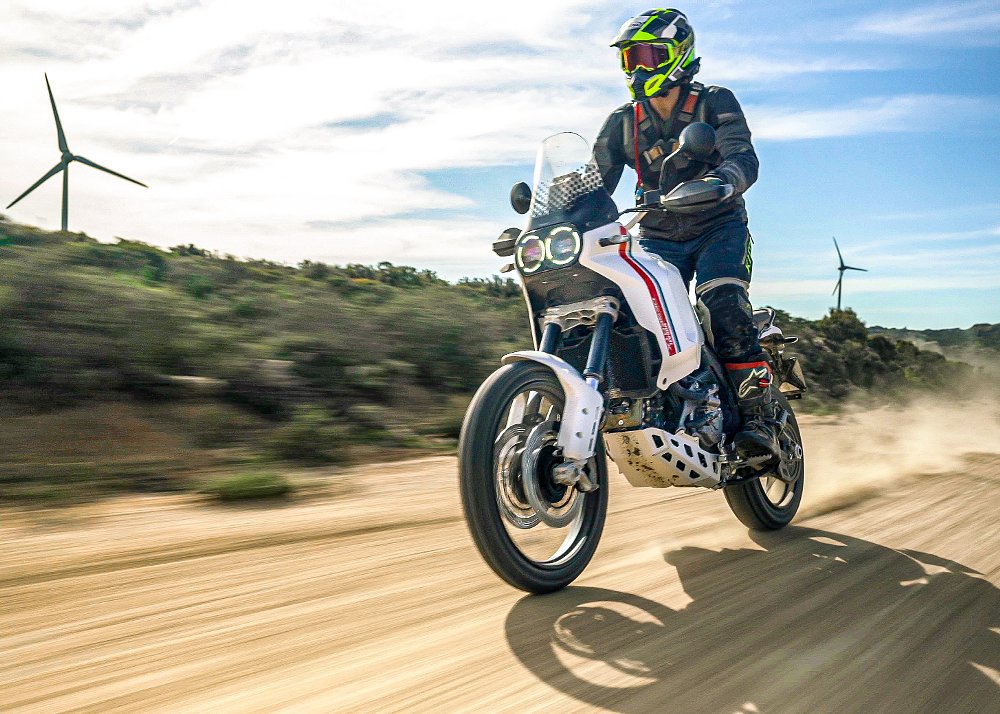
Riding the Ducati DesertX off-road
At the start of the morning, I was able to work with one of the Ducati mechanics to dial in the DesertX’s controls to my liking. That consisted of rotating the handlebar forward, raising the shift lever up half an inch, and adjusting the rear brake pedal to its highest position. The note here is how easy it was to get the ergonomics dialed in to my preferred settings.
The one area that we didn’t adjust was the suspension. I was assured that they had the suspension set up to match the terrain. I was skeptical, but I have also been proven wrong before, so I just went along with it.
After a short ride out of town, we hit our first section of hard-packed dirt with some loose pebbly gravel spread on top. I was struck by how easy it was to ride in the standing position. The weight is carried low in the chassis and the bike feels balanced at both low and high speeds.
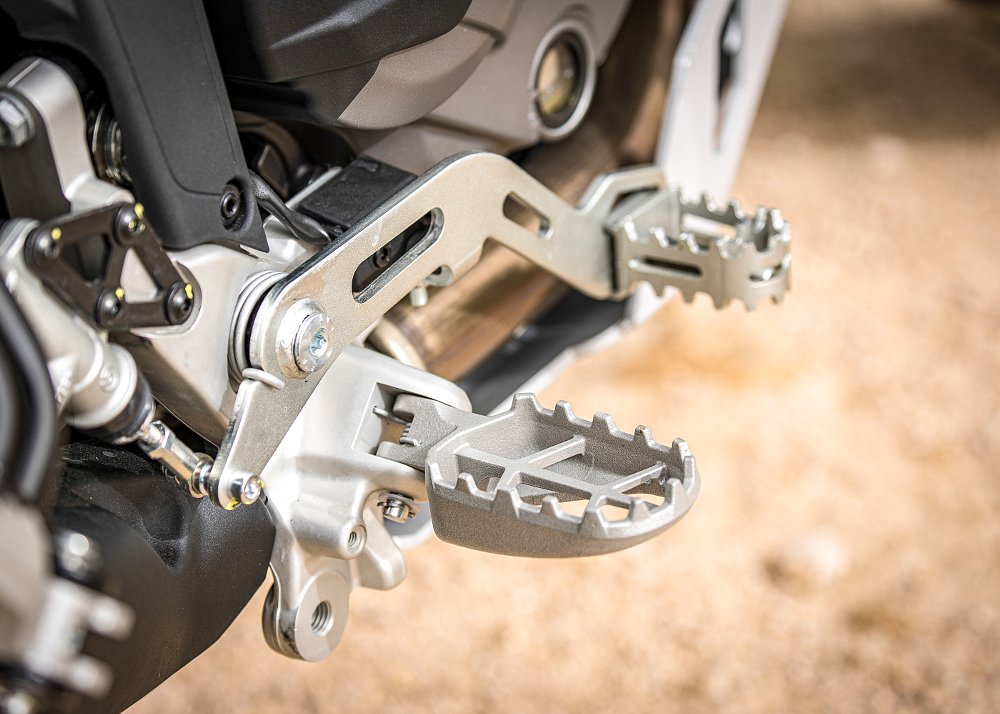
I don’t think footpegs get enough mention in ADV bike reviews, and I intend to remedy that here. The DesertX’s large, wide footpegs are some of the best stock pegs in the ADV segment. BMW, Yamaha, and Triumph should take notes. Their larger size is perfect for all-day comfort, provide leverage off-road, and offer up some solid grip to keep one’s feet locked in place.
I started this section of the ride in Enduro mode. While I found the bike to be a bit grumpy below 4,000 rpm in some of the more street-focused settings, it seemed to smooth out a little bit in the Enduro setting. The DesertX’s hydraulic clutch pull is smooth and easy to modulate through more technical terrain. Compared to the cable clutch on my personal KTM 890 Adventure R, this clutch is a dream.
While I like the throttle response and overall feel of the Enduro setting, having ABS on at the rear and the higher level of sensitivity from the traction control was a bit weird to get used to.
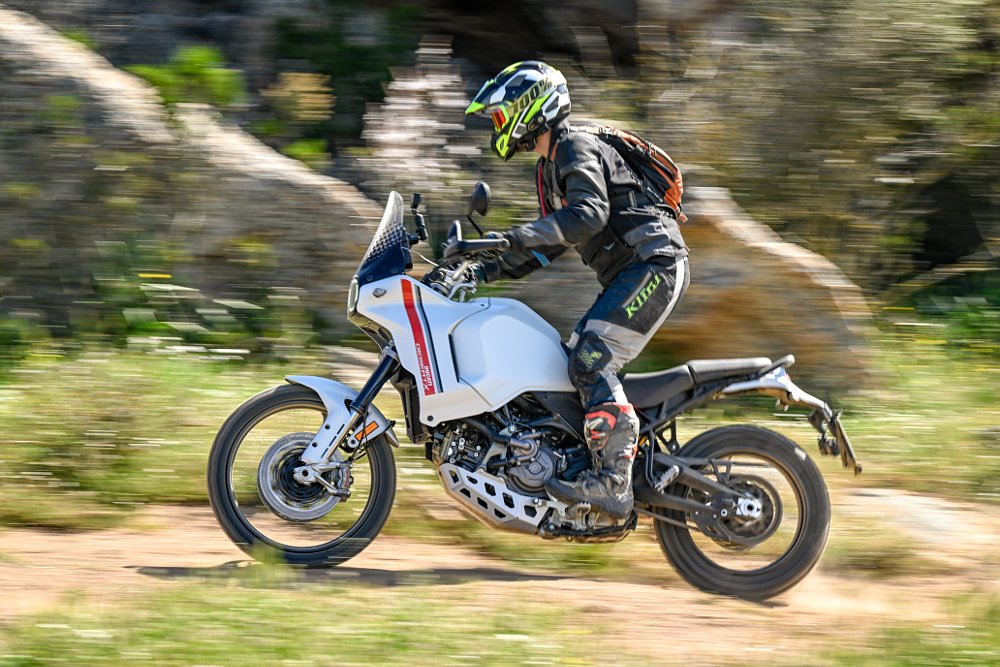
Swapping to Rally mode I felt a bit more comfortable, as it allows more experienced riders a bit more freedom in controlling the bike. That being said, I thought the TC was still coming on a bit too easily. So into the menu I went to tweak it a bit further. The only issue with Rally Mode is that with all of the DesertX’s power, combined with the more street-focused Pirellis, oftentimes the rear wheel would spin instead of hooking up.
Later at dinner, Spenser was talking to Danilo Petrucci, who, among other feats of motorcycling, most recently won a stage at Dakar. He was telling Spenser that he actually preferred riding in the Enduro setting and just removing all of the rider aids. He said the reduced power helped him maintain traction over some of the looser terrain we were riding.
Based on how well he was tackling the route, it was clear that Mr. Petrucci could do more with 75 horsepower than most will ever be able to do with a 110. Having heard his recommendation on our last night in town, I didn’t get the chance to try it out, but it sounds like it would have been the perfect combination for the terrain.
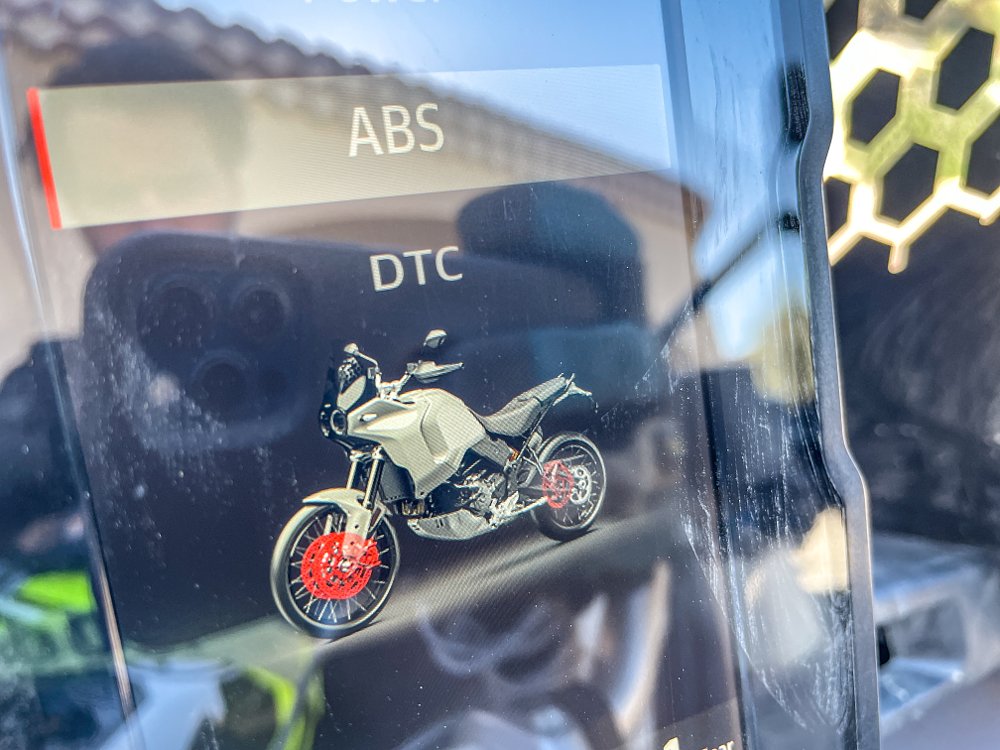
The real takeaway here is that the possibilities are endless for adjusting the DesertX’s electronic combinations. It’s a tweaker's dream. And we haven’t even gotten to the suspension yet, which is the main area of the bike that I struggled with off-road.
Unlike the majority of journalists at this launch, we had the opportunity to ride the DesertX, on the same route, two days in a row. At the end of the first day I spoke with the mechanics back at the hotel and explained that the bike’s suspension setup was just way too harsh over the hard-packed terrain we were riding.
This was apparently a complaint with some of the other riders in the first group, as well. So they said they would make some adjustments before the next day's ride to all of the bikes in our group.
Back out on the same terrain on the following morning, the suspension felt better, but not great. While I don’t pretend to be a suspension expert, I am friends with some folks who are and I’ve picked up a thing or two over the years. Based on my experience, it felt like the springs were too soft for this big ol’ ice cream-loving American rider (currently tipping the scales at 210 pounds) and I was blowing through the stroke and the damping was left to do all of the work, leading to a bit of a harsh experience.
I spoke to some of the German test riders in our group who looked like they weighed about as much as I did in sixth grade, and they seemed to think the bike was set up very plush and appeared to be enjoying it. That furthered my theory that the bike was in need of some more preload on the springs. Unfortunately, there was a bit of a language barrier.
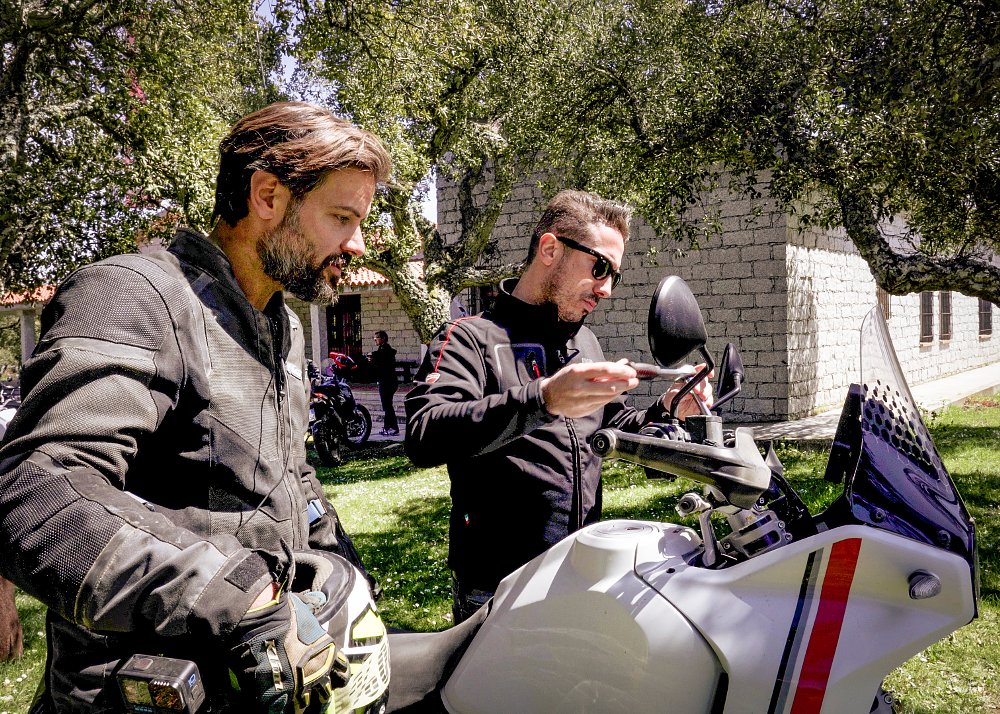
Talking to the mechanic over lunch, I explained the issue that I was having and suggested I might need more preload. I then watched as they removed preload from the front end and told me to try it. As I wasn’t 100 percent confident in my own diagnosis, I gave it a shot.
While others enjoyed a relaxed lunch of cheese, honey, and cured meats, I blasted down a single-track trail, immediately bottoming out the front fork so hard I thought I knocked a filling loose. Back to camp.
After a little more explaining, and some translation from Giulio, I got some preload added back to the front end and a little bit of rebound damping removed. This helped get me back on track, but lunch was coming to an end. So, in a last-ditch effort, I cranked a few handfuls of preload into the rear shock, and took off.
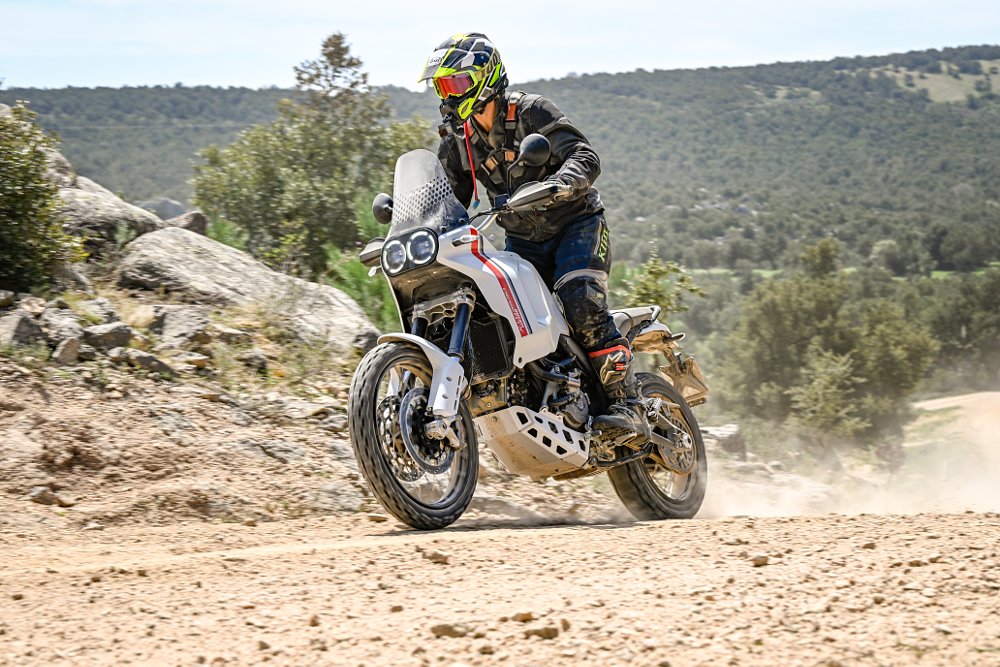
Riding up a rocky two-track road that connected a series of windmills, the suspension immediately felt better. It wasn’t nearly as harsh and I wasn’t blowing through the stroke. It wasn’t perfect, but we were making progress.
Unfortunately, my time off-road with the bike came to an end just as I was starting to get it dialed in. But even without the suspension settings aligning perfectly with my riding style and weight, it was clear to see that the DesertX has the makings of a pretty potent off-road ADV machine.
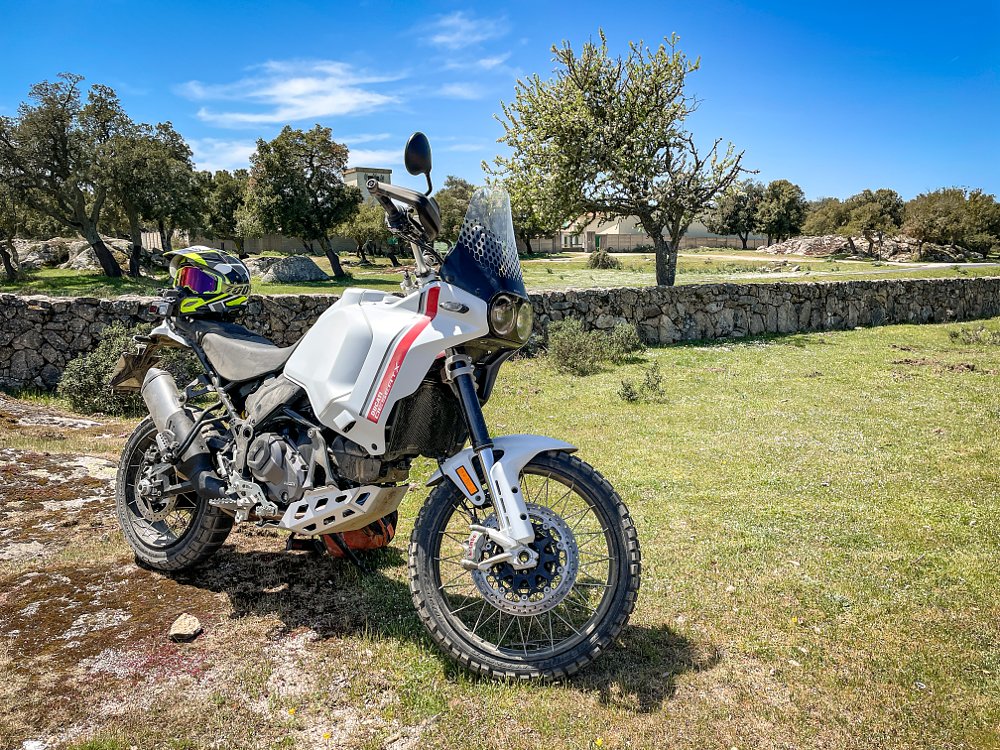
Pricing and competition
The DesertX features a base MSRP of $16,795. As tested, ours was $17,460 as it was outfitted with the upgraded skid plate ($500) and radiator guard ($165). If you continue playing around with Ducati’s Configuration feature on the website, you can easily drive the cost of a new DesertX well north of $20,000. But even if you just take it as it comes, it’s going to sit at the very top of the middleweight ADV segment.
For example, a Tiger 900 Rally Pro starts at $17,100 in White and comes with cell phone connectivity (an add-on for the DesertX), skid plate, and crash bars as standard fare. The DesertX in similar trim comes in at $18,451. A fully loaded BMW F 850 GSA with the premium package, which includes crash bars, luggage rack, and smartphone connectivity will set you back $17,340. A comparable equipped DesertX will run you roughly $19,891, and that's nearly double the cost of a stock Yamaha Ténéré 700, with an MSRP of $10,299.
Price aside, the DesertX falls somewhere in between the existing crop of adventure middleweights. It doesn’t feel as off-road capable as something like a KTM 890 Adventure R ($14,599) and not as light or affordable as something like the Aprilia Tuareg 660 ($11,999), but it’s better on the street than pretty much any of the competition.
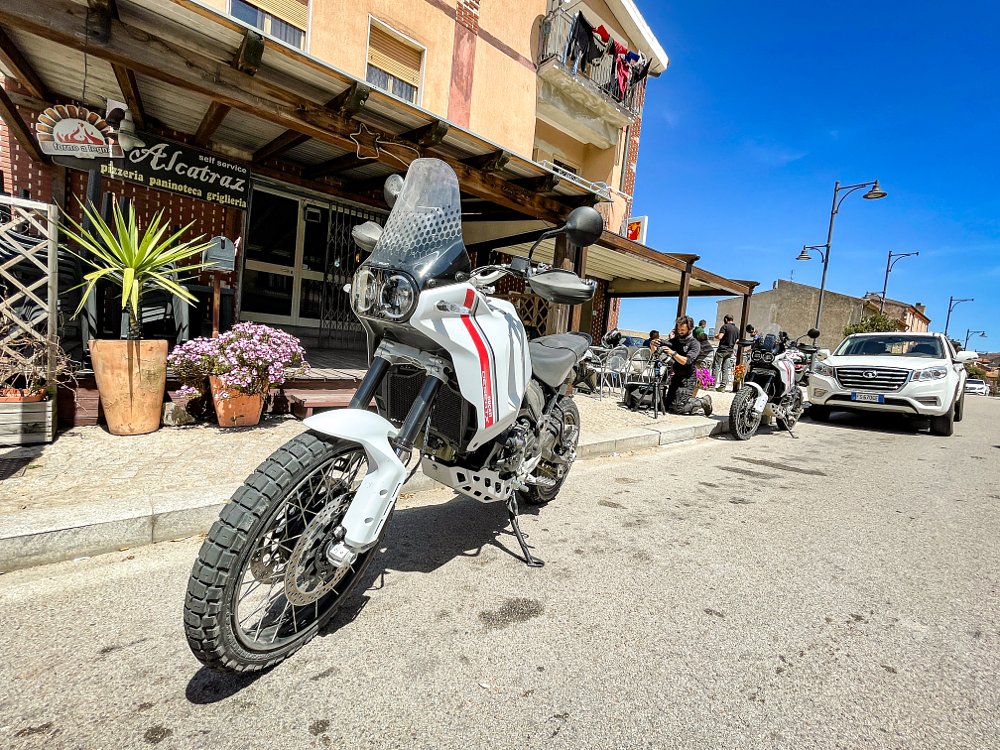
More so than anything, it’s a pretty machine. I know looks are subjective, but I’ve listened to enough of you talk about how ugly you find the 890 Adventure R and how great you think the Husqvarna Norden looks to know that you probably think the DesertX looks good, too. Plus, it has some legitimately cool accessories we didn’t get to test, like the two-gallon auxiliary fuel tank that mounts to the subframe.
So, depending on how deep your pockets are and what you want out of an adventure bike, the unique thing about the DesertX is that it can kind of compete with anything.
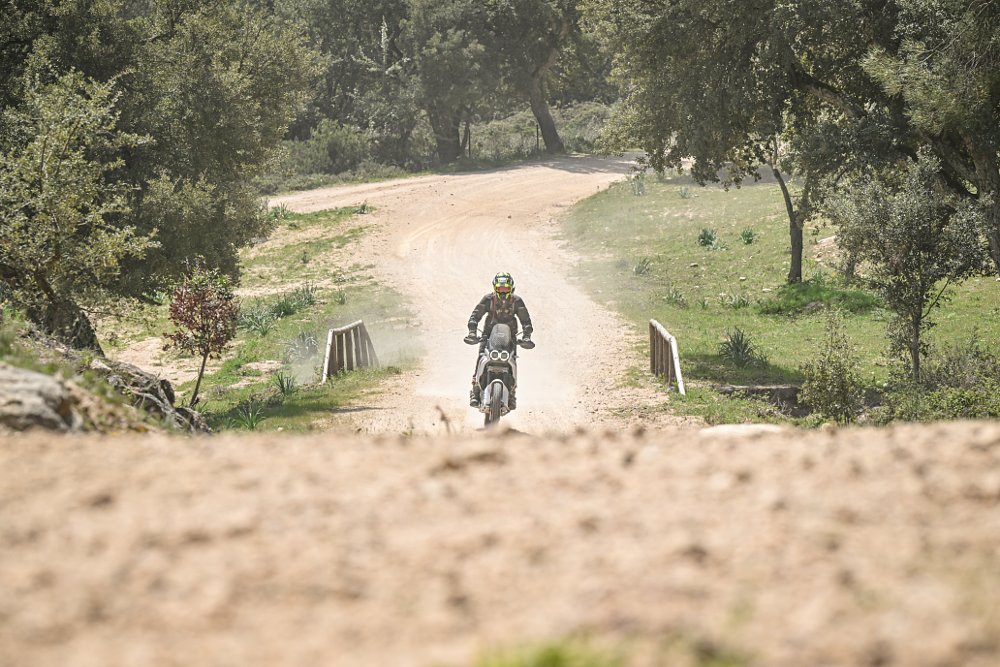
Conclusion
Coming off the mountain, we transitioned back onto one of the best stretches of tarmac I have ever ridden in my life. Spenser and I arrived at the hotel grinning ear to ear. The tweaks to the suspension made the bike even better on the street, as well as the dirt.
Suspension adjustment can be tricky enough when you’re doing it at home in a language you actually speak, but the Ducati mechanics kindly worked through the communication barrier to help dial things in. And for what it’s worth, the rest of the bike felt impressively spot on from the get-go for its intended use, which is impressive considering this is Ducati’s first foray into a properly spec’d middleweight adventure bike.
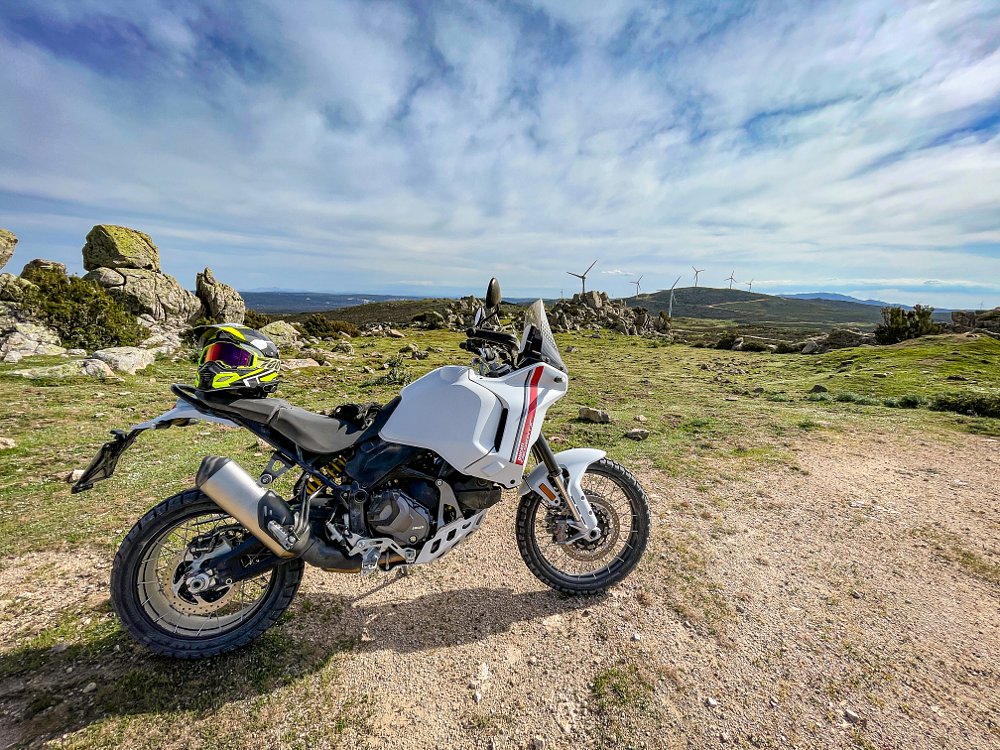
If you prefer simplicity from your machines and don’t care about the ability to fine tune electronic adjustments and suspension settings, the DesertX is not the right bike for you. But, if you’re the kind of rider who doesn’t mind putting in the work and tweaking adjustments to get the bike set up, I think the DesertX has massive potential for how good it can be for a wide variety of individuals.
When Lance Oliver wrote the “first look article on the DesertX”, I left a comment that said, “What a time to be alive, what a time to be alive…”. The DesertX is a welcome addition to the existing crop of middleweight adventure bikes and will probably even give some of the bigger bikes a run for their money. The only downside is that it’s yet another great bike to choose from when trying to figure out which one to add to your garage.
| 2022 Ducati DesertX | |
|---|---|
| Price (MSRP) | $16,795 (as tested: $17,460) |
| Engine | 937 cc, liquid-cooled, eight-valve, L-twin |
|
Transmission, final drive |
Six-speed, chain |
| Claimed horsepower | 110 @ 9,250 rpm |
| Claimed torque | 68 foot-pounds @ 6,500 rpm |
| Frame | Tubular steel trellis frame |
| Front suspension | Kayaba 46 mm inverted fork, adjustable for preload, compression and rebound damping; 9.06 inches of travel |
| Rear suspension | Kayaba shock, adjustable for preload, compression and rebound damping; 8.66 inches of travel |
| Front brake | Dual Brembo M50 four-piston calipers, 320 mm discs with cornering ABS |
| Rear brake | Brembo two-piston caliper, 265 mm disc with cornering ABS |
| Rake, trail | 27.6 degrees, 4.8 inches |
| Wheelbase | 63.3 inches |
| Seat height | 34.4 inches |
| Fuel capacity | 5.4 gallons (plus 2.1 gallons in the optional rear tank) |
| Tires | Pirelli Scorpion Rally STR, 90/90-21 front, 150/70R18 rear |
| Claimed weight | 492 pounds wet |
| Available | June 2022 |
| Warranty | 24 months |
| More info | ducati.com |

 Membership
Membership












